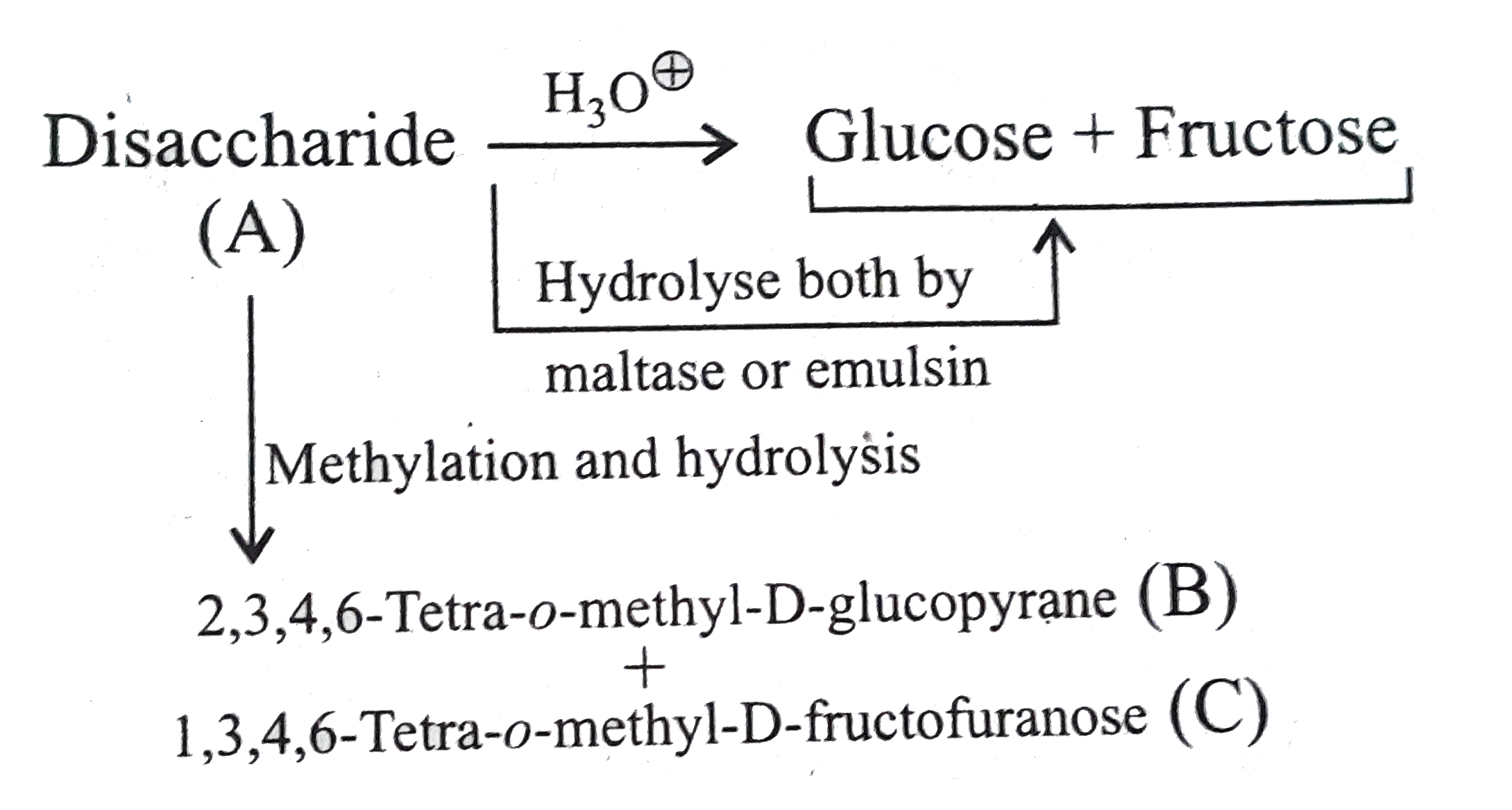Complete Solutions to Solved Examples of chapter BIOMOLECULES of Class 12 book with complete answers and questions
| Class 12 | CHEMISTRY |
| Chapter | BIOMOLECULES |
| CENGAGE CHEMISTRY | Solved Examples |
| Number Of Questions | 45 |
| Academic Year | 2023-24 |
Convert `D`-glucopyranose to `2,3,4-` triethyl gluocopynoside.
11:12View SolutionGive Principle of: Centrifugation
01:43View SolutionDifferentiate between `D-`erythrose and `D-`threose by (a) mild oxidation and (b) reduction.
03:32View SolutionName the smallest aldose which forms cyclic hemiacetal and the functional groups are involved in its formation.
02:37View SolutionGive 4 properties of metals.
02:45View SolutionGive the structure and `IUPAC` name of disaccharide, which gives the reactio given below:

Given, `(A)` does not reduce Fehling's solution and does not mutarotate.02:15View Solutiona. Give a chemical test of starch with `I_(2)`.
b. What is the change in colour, when the test is performed at high temperature?
c. What structural changes occurs during the change in reaction conditions?
d. Do amylose and amylopectin give the same colour?03:20View SolutionState necessary condition of iron corrosion.
01:17View SolutionWhen a Mg ribbon is burnt in air, Mg is oxidised or Reduced?
01:49View SolutionAluminium oxide can react with both Acid and Bases. Justify.
01:43View SolutionDefine the terms:
a. Gene , b. Genetic code,
c. Transcription, d. Translation
e. Codond05:59View SolutionList three functions of nucleotides in a cell.
01:13View SolutionThe two strands in DNA are not identical but are complementary. Explain.
02:15View SolutionWrite two main functions of carbohydrate in plants.
01:08View SolutionWhat type of bonding occurs in globular protein?
02:16View SolutionWhat will be the sequence of bases on `mRNA` molecule synthesised on the `DNA` strand, `TATCTAC TGGA`?
02:27View SolutionName one reducing and one nonreducing disaccharide.
01:15View SolutionName on fibrous and one globular protein.
02:26View SolutionWhat is the cause of sickle-cell anaemia?
05:32View SolutionGive one example of a denaured protein.
02:14View SolutionName a polypeptide hormone which maintains the glucose level in the blood.
01:01View SolutionWhat is a nucleoside?
02:11View SolutionWhat is a nucleoside?
02:11View SolutionName the purine bases and pyrimidine bases present in RNA and DNA.
02:20View SolutionWhat are waxes?
01:57View SolutionWhat is mutarotation ?
04:00View SolutionWhat are nutral amino acids? Give two examples.
01:27View SolutionWhat are acidic amino acids?
01:10View SolutionWhat are basic amino acids? Give one example.
01:40View SolutionName the enzymes that help in the digestion of carbohydrates.
01:27View SolutionWhich one of the following is a protein deficiency disease?
03:03View SolutionArrange the following sugars in the increasing order of sweetness: glucose, fructose, sucrose.
02:49View SolutionPhospholipids are
02:06View SolutionGive two examples of disaccharides.
01:13View SolutionName two important polysaccharides of `D`-glucose.
01:35View SolutionWhat is a peptide bond?
01:37View SolutionName the building blocks of proteins.
01:40View SolutionWrite the zwitter ion structure of glycine.
01:29View SolutionWhich enzyme dissolves blood clots in the coronary artery?
01:41View Solutionname three nucleic acids which are used in protein synthesis.
01:39View SolutionWhat are biofuels?
01:25View SolutionWhat are the monomers constituting proteins?
01:30View SolutionWrite short notes on the following: (a) Enzyme specificity, (b) Enzyme inhibition.
07:38View SolutionWhat is the effect of `pH` on the action of enzyme?
02:51View SolutionWhat are the functions of nucleic acids ? What are the structures of sugar molecules present in DNA and RNA.
02:21View Solution
Solved Examples questions and complete solutions for chapter BIOMOLECULES of CENGAGE CHEMISTRY (ENGLISH) of Class 12
All Exercises from CENGAGE CHEMISTRY Class 12 CHEMISTRY BIOMOLECULES
- Exercises (Assertion-Reasoning)
- Exercises (Concept Application)
- Exercises (Linked Comprehension)
- Exercises (Multiple Correcttype)
- Exercises (Single Correcttype)
- Exercises Archives (Analytical And Descriptive)
- Exercises Archives (Assertion-Reasoning)
- Exercises Archives (Single Correct )
- Illustration
- Solved Examples
